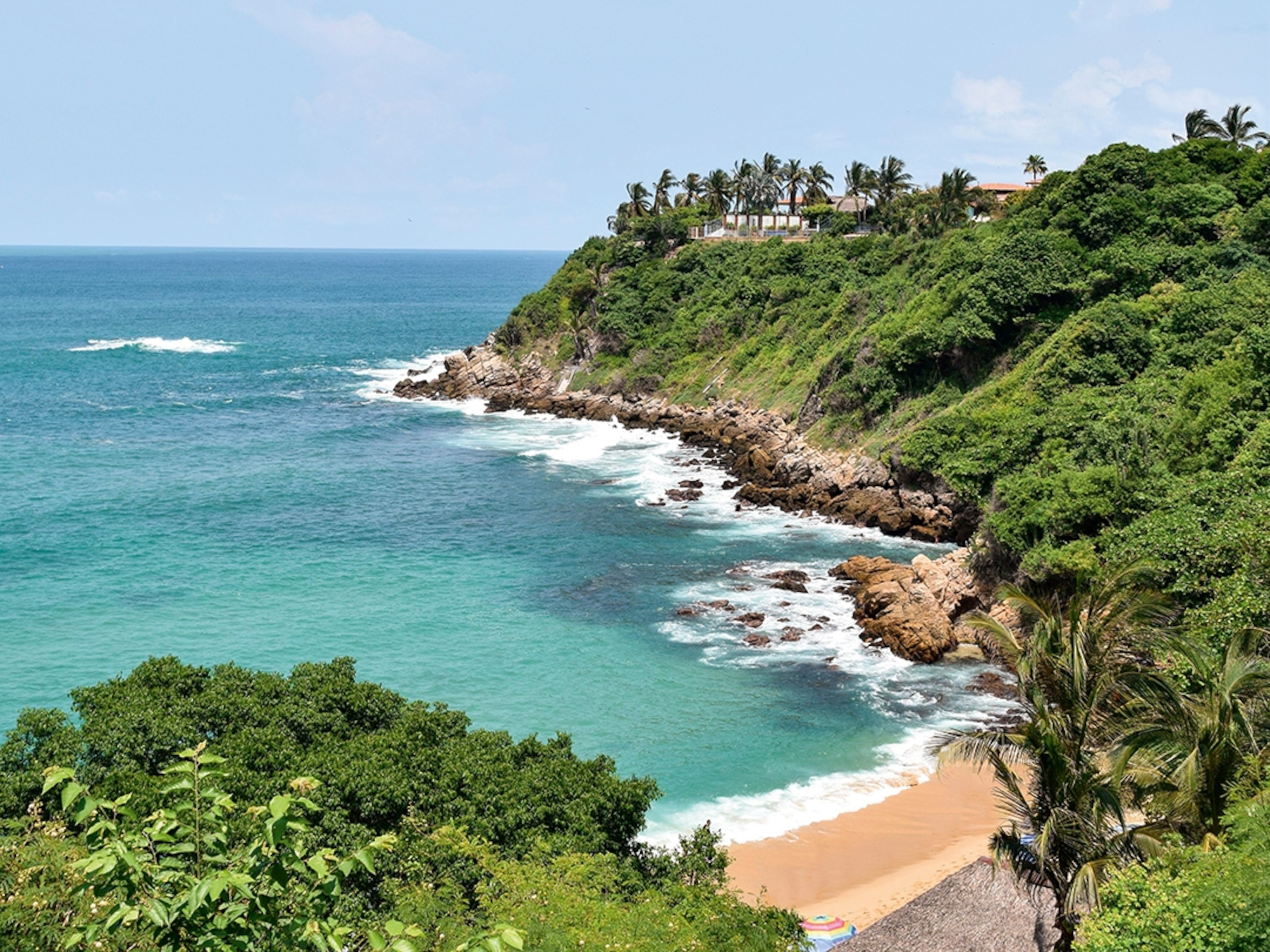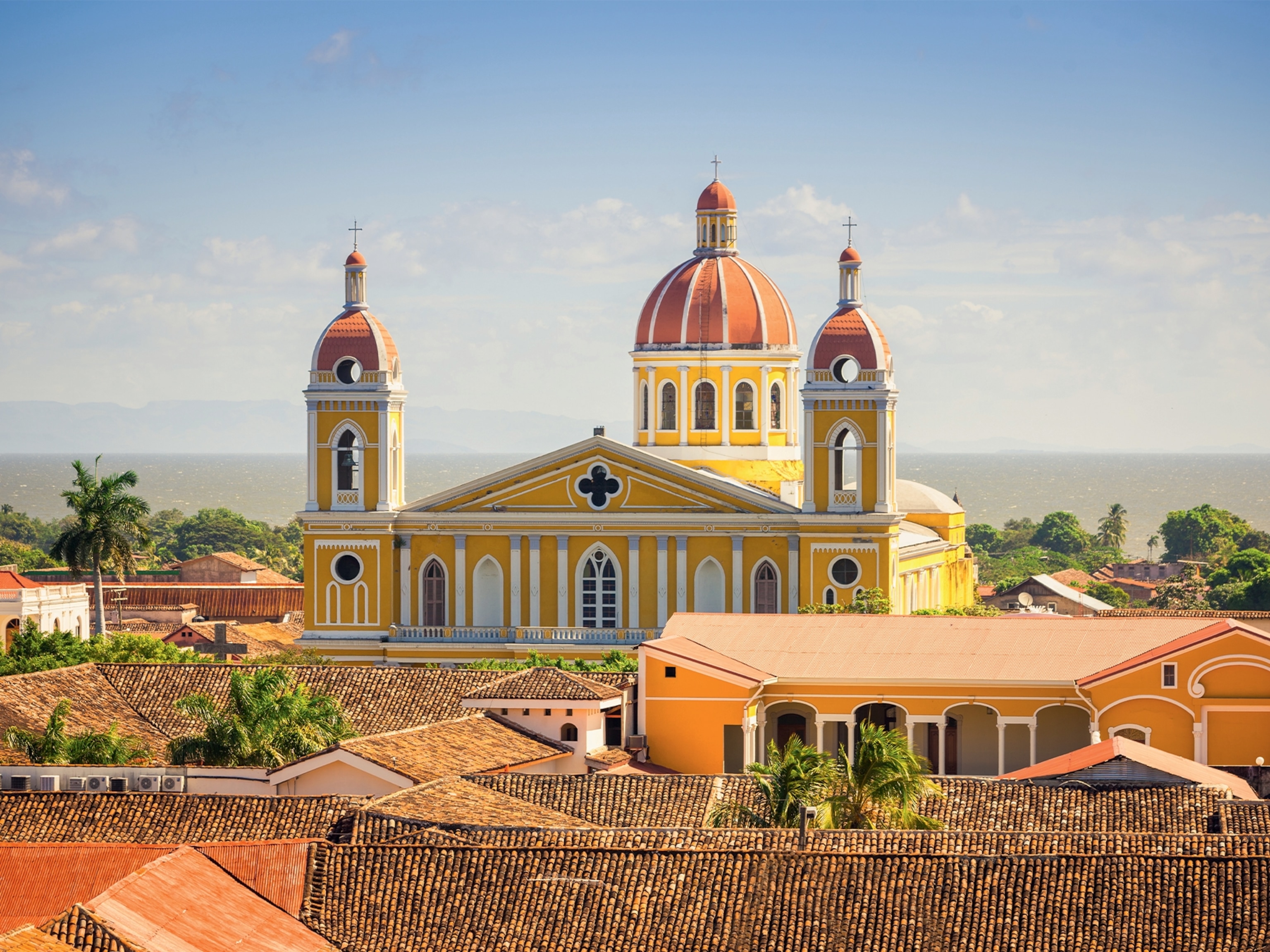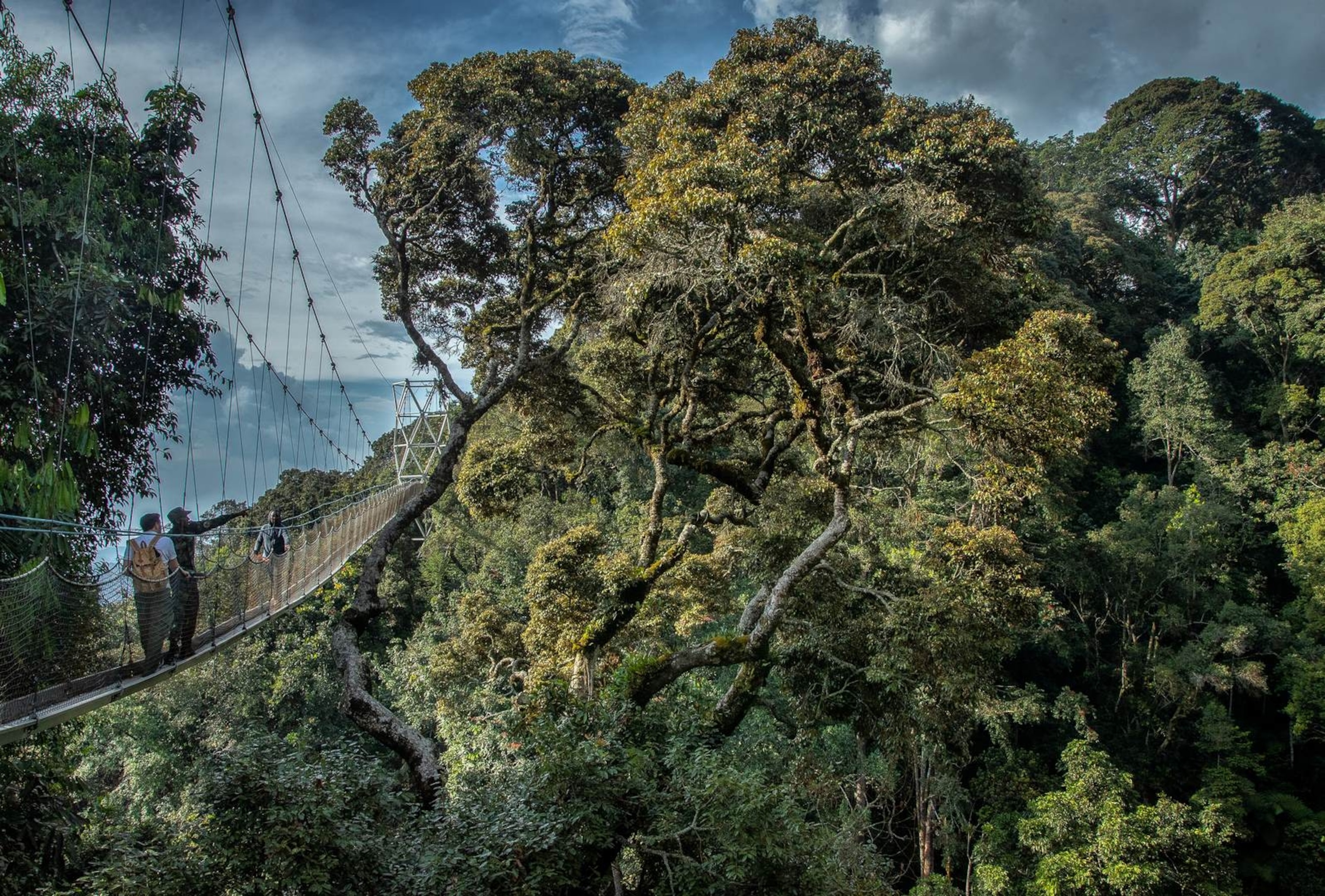
From silverbacks to sips of tea: The ultimate 10-day Rwandan adventure
Diverse landscapes, royal roots, wildlife encounters, and luxurious offerings combine in a country that is easily accessible to all who seek an adventure for the ages.
Rwanda’s rhythm is palpable. Whether you are walking in the footsteps of giant silverback gorillas in Volcanoes National Park, exploring the wetlands in Akagera or shaking your hips to an African beat in a nightclub in the capital Kigali, you feel it. The underlying pulse of love, community, and connection is infectious and quickly connects you to the people and the place. On this 10-day adventure you can trace the country’s incredible history from its royal roots through its four national parks and into its 21st century cosmopolitan center.
(Seven reasons to make Rwanda your next destination)

DAY ONE
Meet the community and understand the past
Visit the Kigali Genocide Memorial, where tributes to the victims offer a place to pay your respects. Leave with a better understanding of how far this country has come. Tonight, absorb the early evening views of this modern city from high above it. Snap photos of the rotating colored lights of the Kigali Convention Center and watch as the city’s homes come to life for the evening. Whether it’s a hotel rooftop, or one of the best restaurants in the city, views from up high will whet your appetite for the adventures to come.
DAY TWO
Explore the history


Watch the city streets fade into winding roads and mountain views as your driver takes you south to the Cultural Corridor. It was from here that kings once ruled. Tour the reconstruction of a traditional king’s palace – the thatch homes from which all decisions were made – in Nyanza. Meet the royal cows on site and the herder who sings to them. Then, wander the halls of the simple, modern home of the country’s last king. Continue your drive south to the detailed Ethnographic Museum in Huye for a look at the socio-cultural history of the country. By afternoon, you should be in the green trees of Nyungwe National Park – home to one of the oldest rainforests on the continent. With 374.5 square miles to explore you won’t be able to do it all today, but the easy stroll out to the Canopy Walkway from the Uwinka reception center offers a chance to marvel at the views from 230 feet above the rainforest floor. Listen for the sounds of 13 species of primates and more than 300 types of birds. Sleep tonight knowing you’ll meet some of the noisemakers in the days ahead.
DAY THREE
Track the chimps
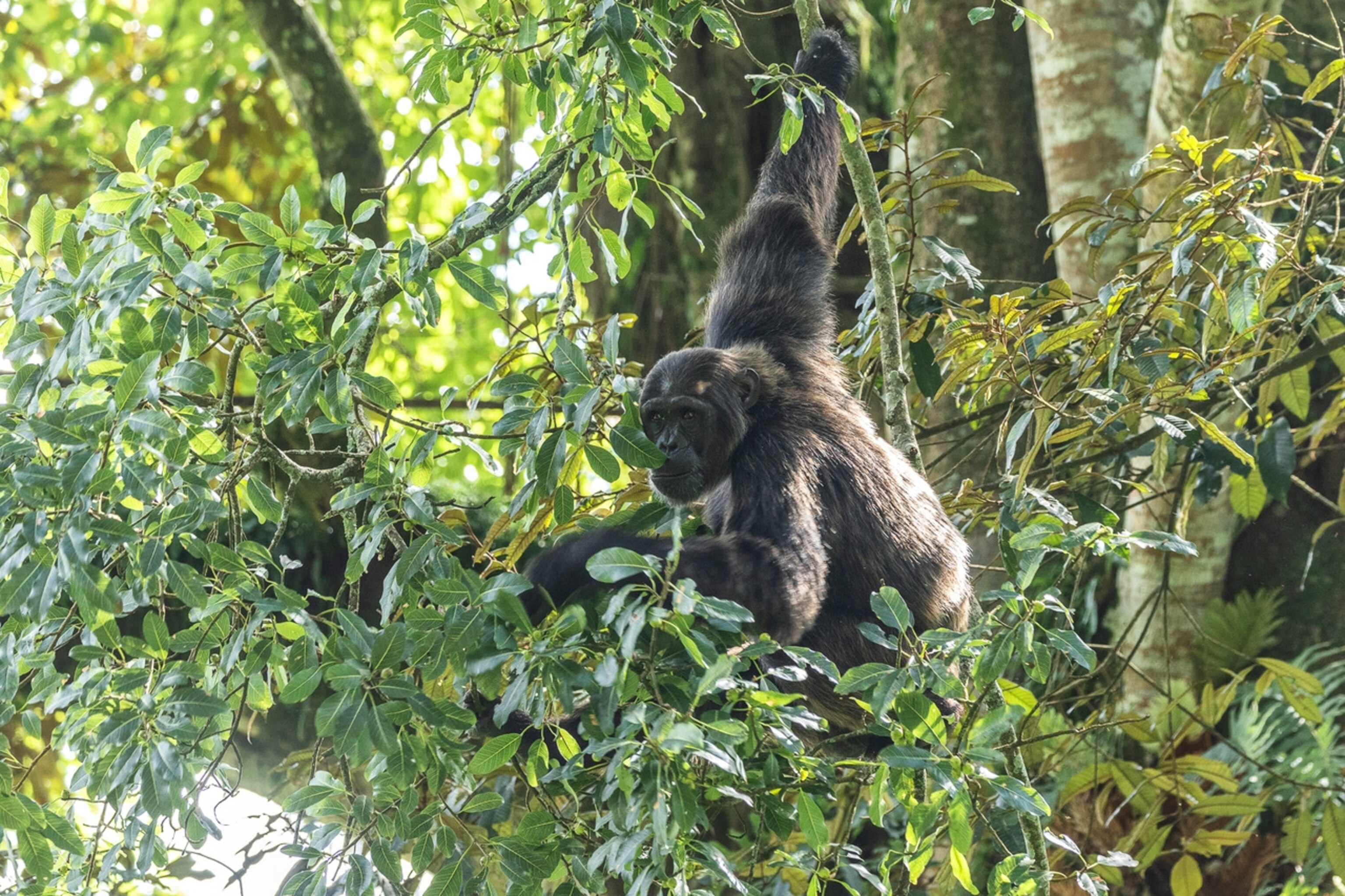
Make your way to Cyamudongo in the dark with a local park ranger who knows the forest’s deepest secrets. Follow him to the home of the chimps. Watch the animals wake, stretch, and start their day in the forest. Snap your photos while you can. Once they’re on the move, catching up to them among the tall trees and thick brush is a feat of athletic prowess. This once in a lifetime experience deserves your full attention: Remember the feeling of the mud beneath your hiking boots, the pitch of the primate calls echoing through the trees and the moment you locked eyes with a chimp in one of the few places in the world where you still can.
DAY FOUR
Renew, replenish, recharge
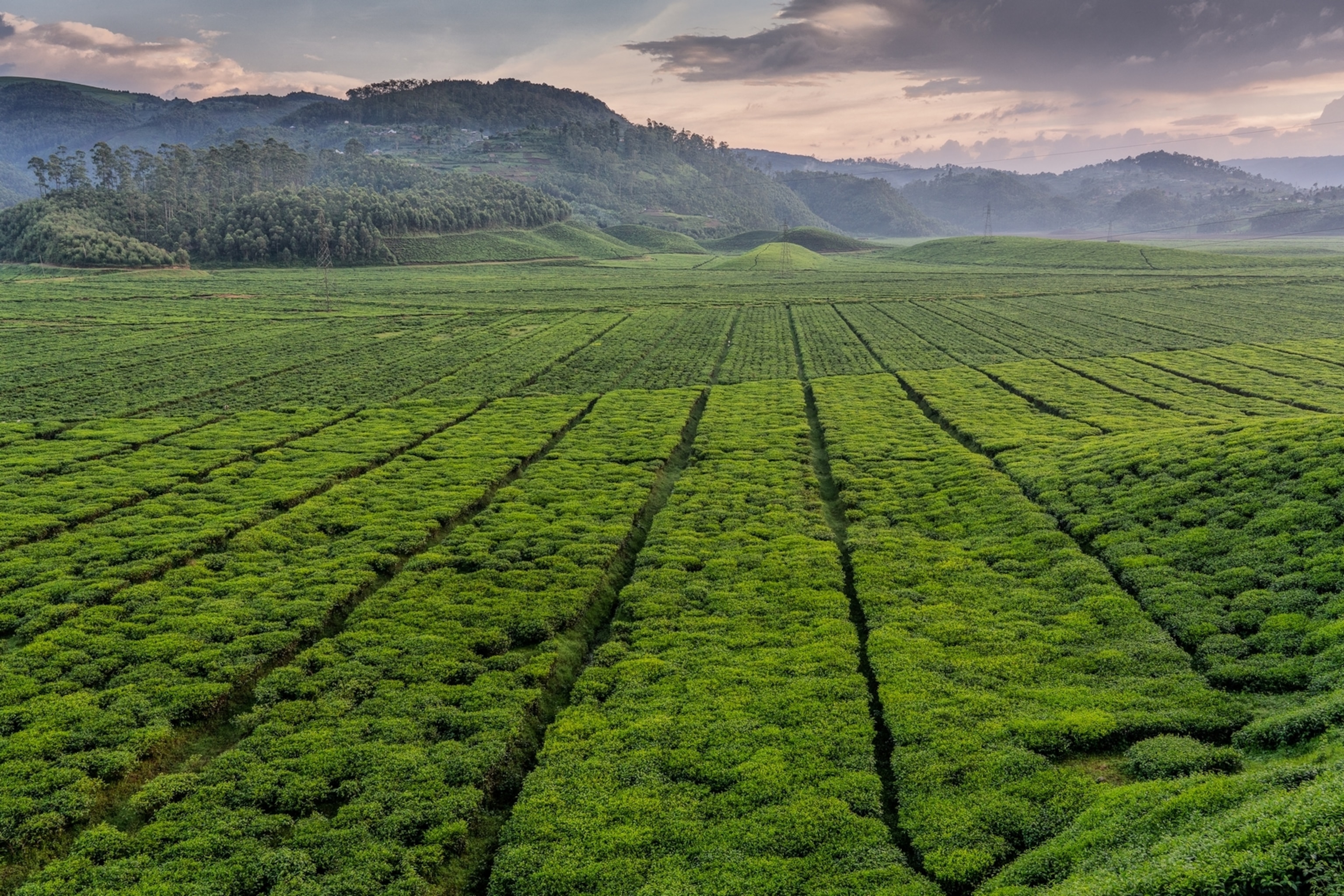
Start with a leisurely breakfast today overlooking tea plantations as far as the eye can see. Note the precision of early morning tea pickers. They choose only the top three leaves of each plant to ensure the best flavors. Develop a new appreciation for the golden liquid in your cup. Spend the morning among black and white colobus monkeys that live in Nyungwe’s trees. You’ll find that they are as curious about you as you are about them. This afternoon, unwind at an outdoor yoga class, try a painting lesson with a local artist, or indulge in a pampering massage using natural products. Or simply return to those tea plantation views with a book and a beverage and do nothing at all.
DAY FIVE
Take to the trails
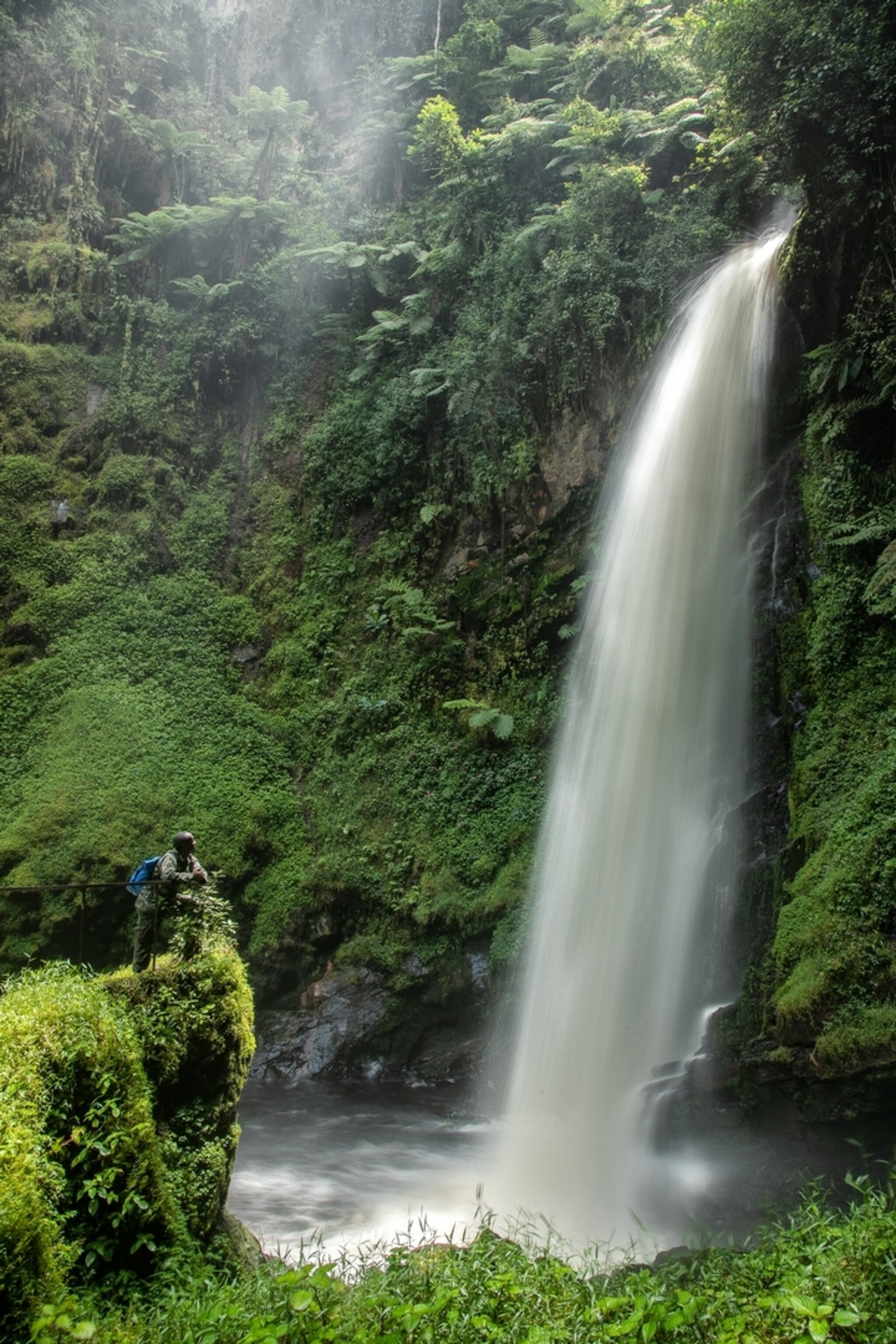
Lace up your hiking shoes and head out early to hike along the waterfall trail. Go slow. Listen for the sounds of the Albertine Rift birds sharing your journey. Your guides will point out the medicinal plants and endemic trees that make their home along the trail. Your reward for the hike–the stunning Kamiranzovu waterfall. Enjoy the peaceful setting. Later this morning you’ll start the drive towards Karongi through bustling townships filled with color and music. Views turn serene again after you arrive and the smell of pine trees and eucalyptus fill the air. And this afternoon, you’ll board a small, covered boat to explore the area from the water. Take a spin past Napoleon’s Island (named for its resemblance to the conqueror’s hat) to survey the land from a new perspective. Follow the baritone hum to find the famous singing fishermen on their all-night mission to catch “Isambaza”. The melodies that synchronize their powerful strokes will stay with you long after you’ve left them.
DAY SIX
Find new perspectives
Rise and look out at the still waters of the largest swimmable lake in Africa. With no hippos or crocodiles to worry about, a morning dip is an easy decision. Soon, you’ll swap this paradise for another. On route to Musanze, wave to the school kids making their way books in hand, and the ladies balancing woven baskets on their heads. Stop in Gisenyi and join a Kingfisher Journeys kayaking trip along Lake Kivu. Take a lunch break at Paradise Kivu – a farm to table restaurant on the water’s edge where you can stroll through the guava and avocado trees on route to the restaurant high above. This afternoon you’ll gain a better understanding of the conservation efforts and mindsets that have made this beauty possible. Visit with the group of former poachers who now operate social enterprises that aid conservation efforts. The Gorilla Guardians site offers the chance to shoot a bow and arrow, learn about traditional dress and more. When the dancing starts, don’t be surprised if you’re asked to join in.
DAY SEVEN
Visit Volcanoes National Park, the home of the silverback
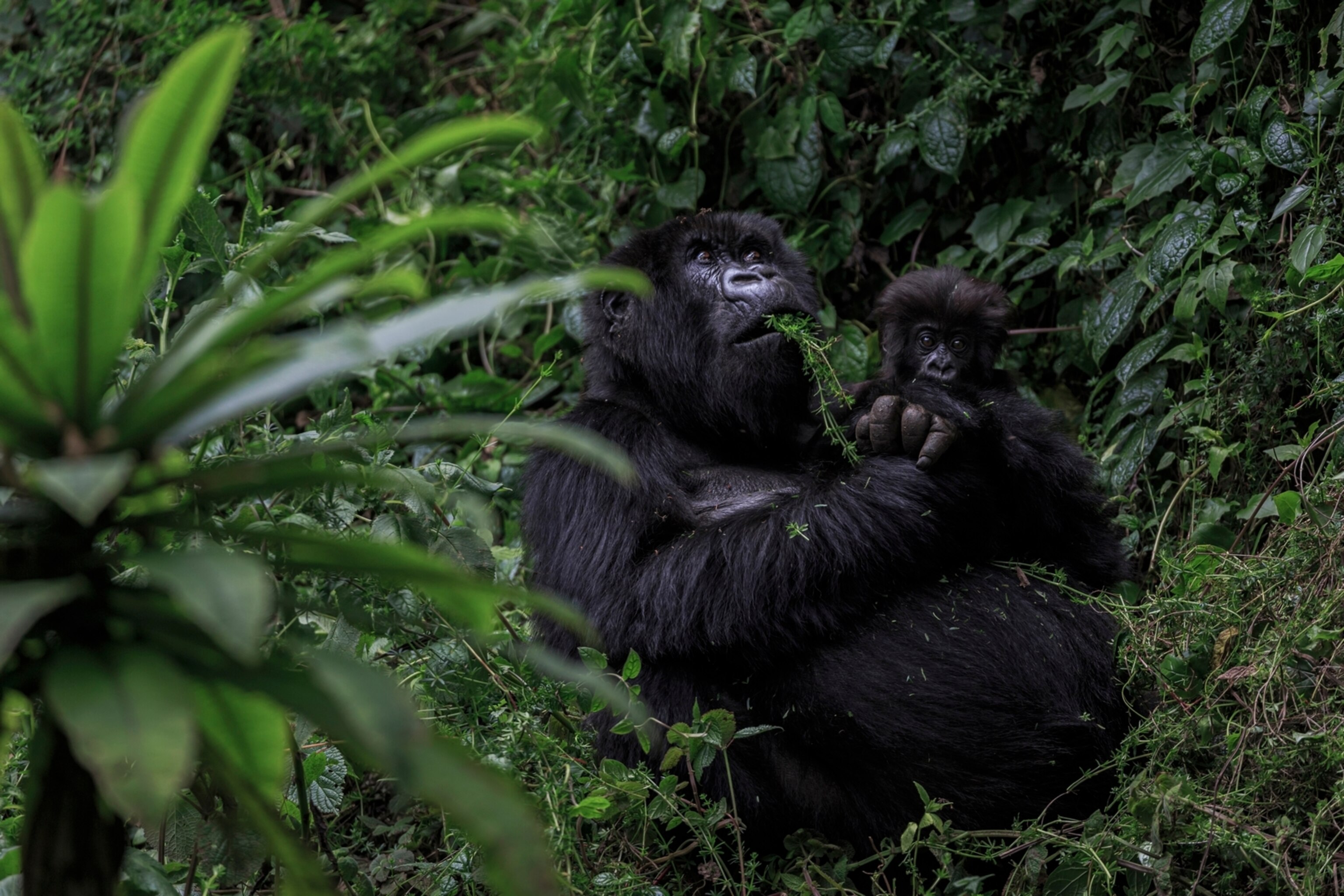
Part the bushes as your guide has done ahead of you and then catch your breath. The telltale silver hairs running up the back of the gorilla in front of you are a bucket list dream come true. Once endangered, conservation efforts and tourism partnerships have allowed these magnificent creatures to flourish. Visit the Dian Fossey Gorilla Fund International Karisoke Research Center this afternoon to better understand the efforts and sacrifices that led to your magical moment.
DAY EIGHT
Safari in Akagera National Park
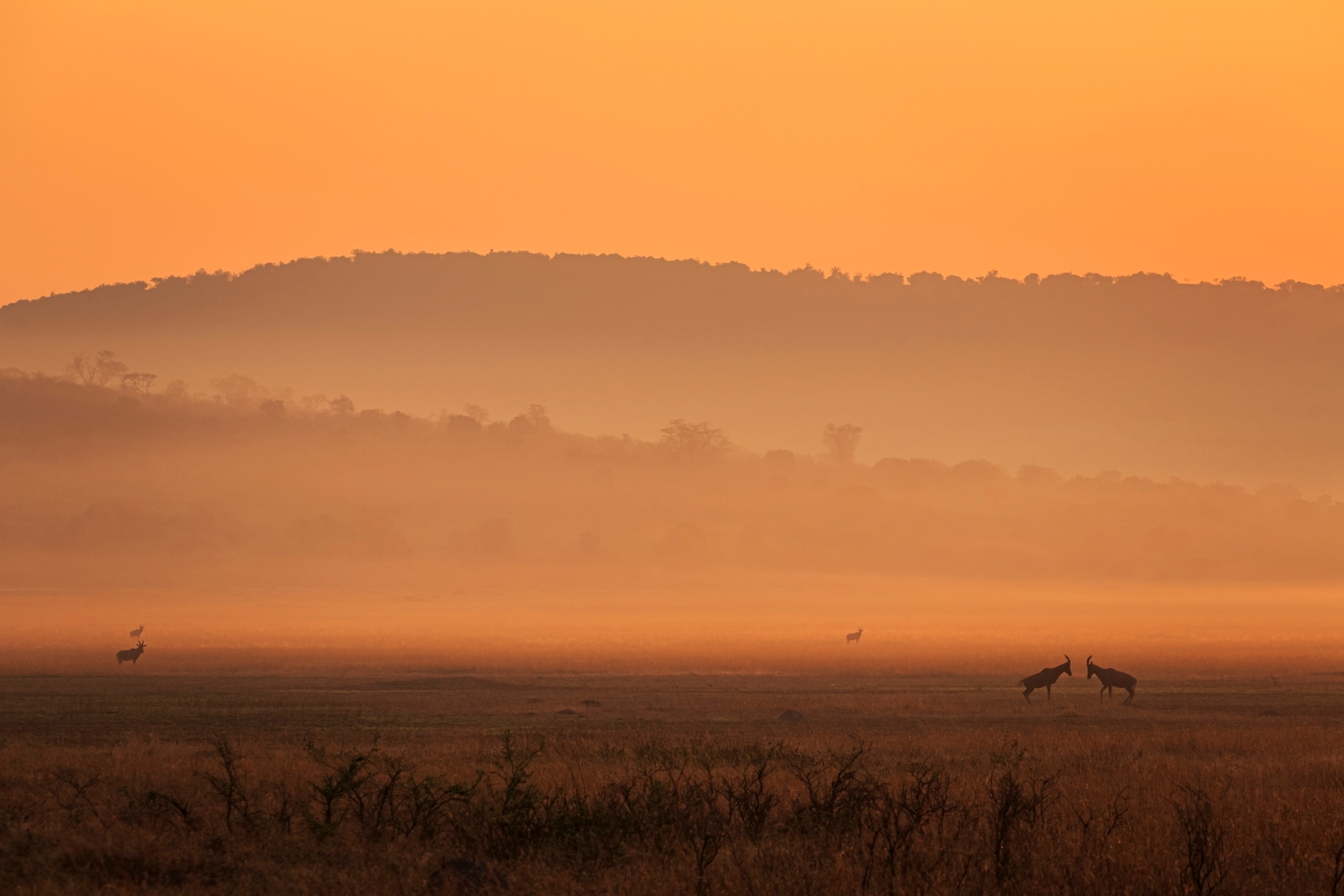
Stretch your legs among the brightly colored shops of Musanze ahead of your next drive. Later this morning you’ll start the leisurely 4.5 hour drive to Akagera National Park. Akagera is Rwanda’s largest national park (433 square miles) and boasts a profusion of wildlife including the Big 5 (lions, leopards, elephants, buffalo, and rhino) that you won’t see in any of the other three national parks. Its savannah plains are dotted with swamps and lakes, as well. And it is that feature that lies at the heart of this evening’s adventure. Take an evening boat ride out to hippo territory. Thousands of the gigantic animals make their home in Lake Ihema. As the sun sets, spot some of the 490 species of birds that call the park home.
DAY NINE
Reap the rewards of conservation efforts in Akagera National Park
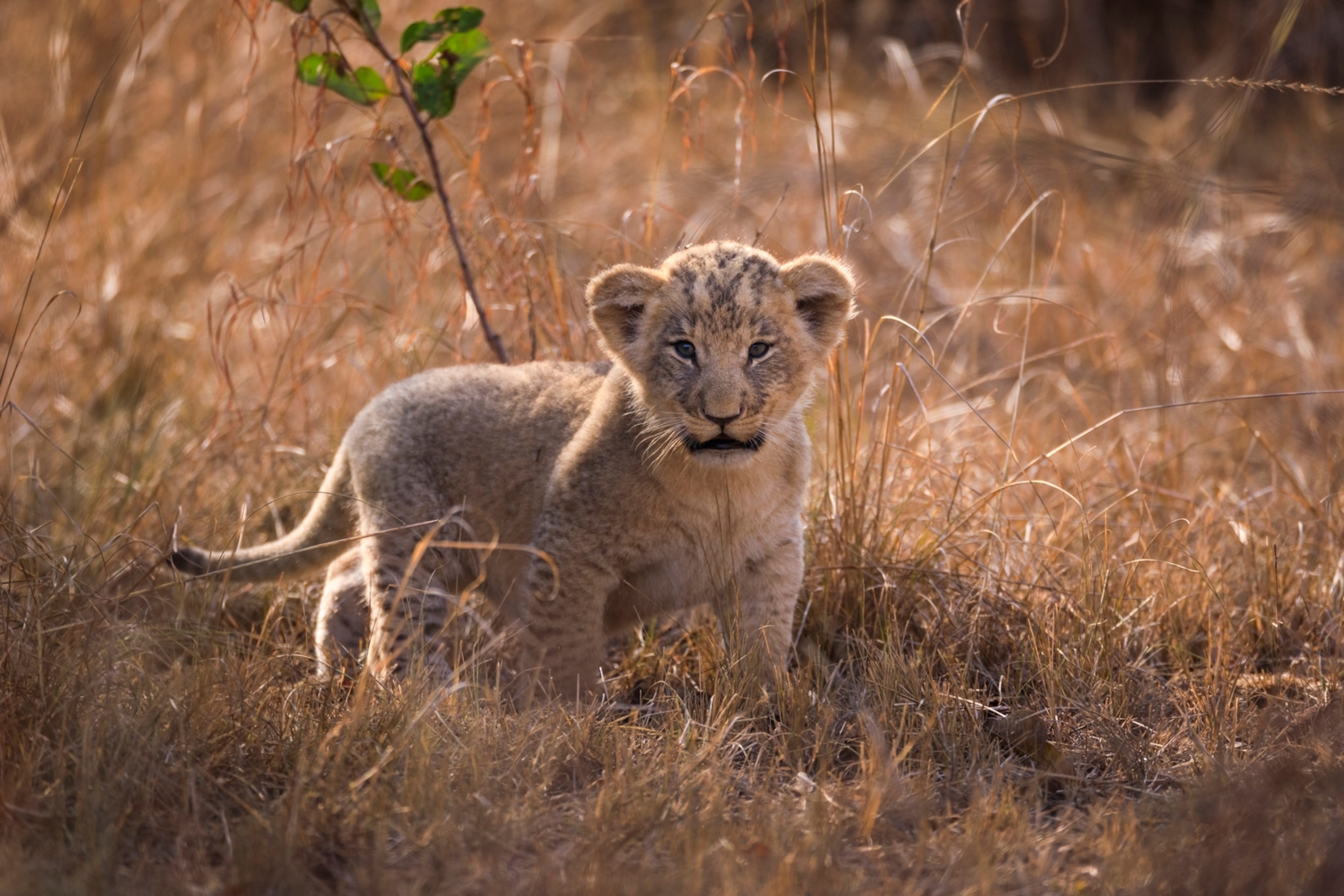
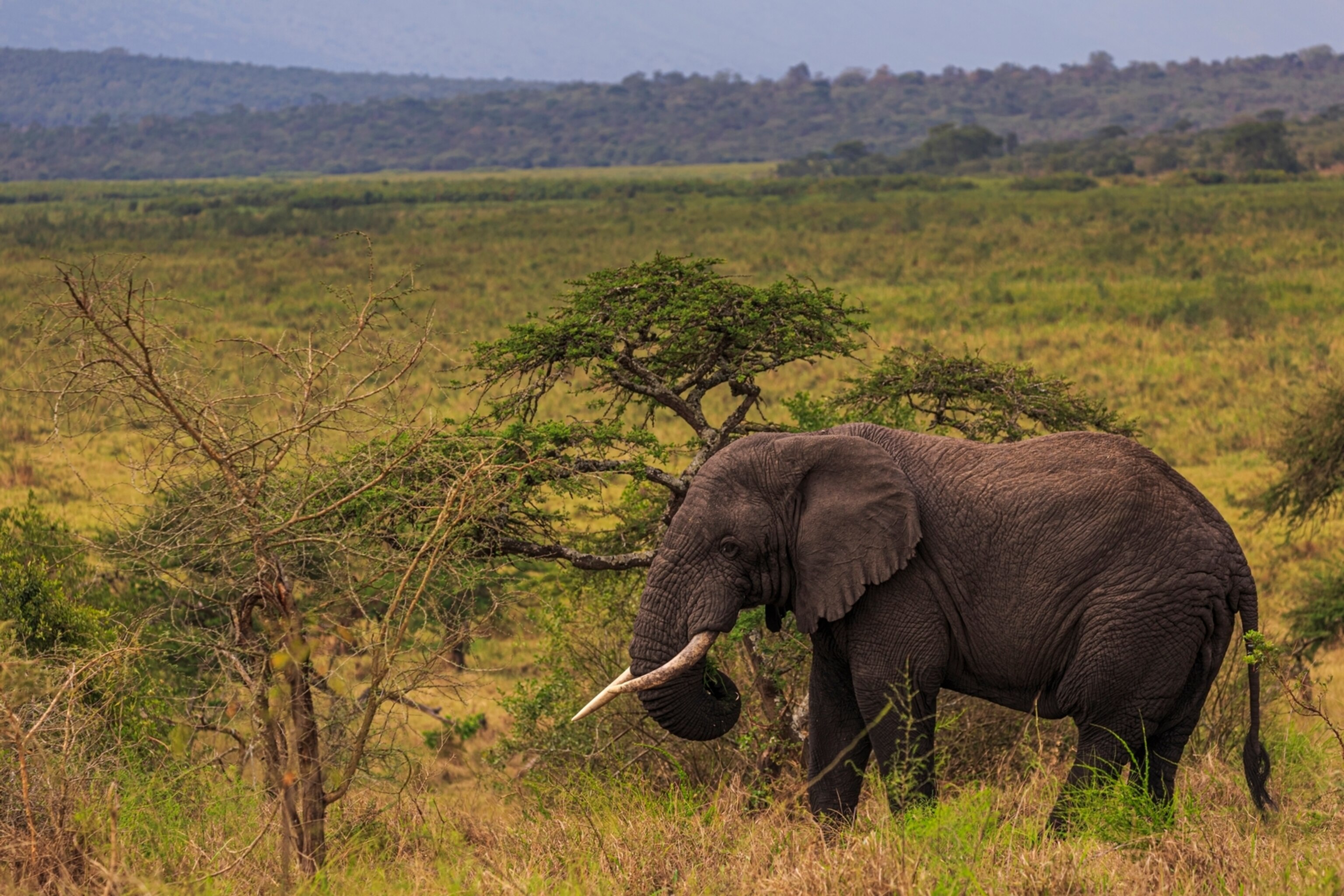
Make the most of your last day in the park. Set out early and head north towards the Kilala plain in search of the Big 5. Recent conservation efforts re-introduced both the endangered black rhino and lions to the area. Today, young ones can be spotted alongside their mothers in the striking landscape. Be on the lookout for zebra, warthogs, baboons, giraffes, topi and more on the large open plains. Have your camera at the ready but remember to stop and take in the moment too.
DAY TEN
Bring the feeling home
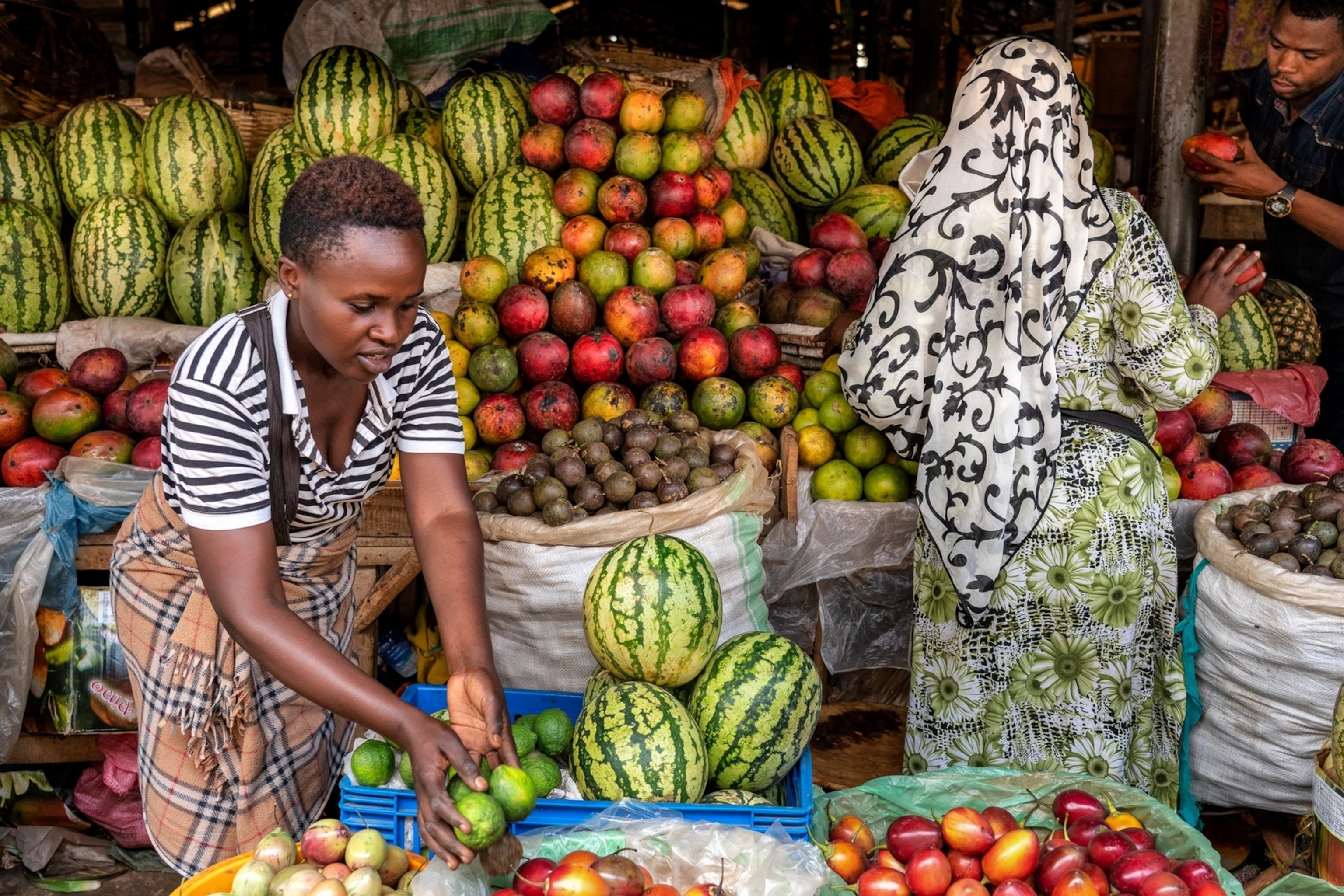
Head back to Kigali with a head filled with all of you’ve experienced over the last nine days. See the city with new eyes. Today’s your last chance to collect the mementos that will keep it close to your heart once you are home. Head out to Kimironko Market. Marvel at the colors of everything from beans to bananas. Get measured by the chatty fabric sellers and an hour later you’ll have ready-to-pack fashions to carry home. Be as pleased with the things packed in your bags as the memories you are taking home in your heart. Fly home tonight excited to share all you’ve seen and the news of Rwanda’s bright future.




